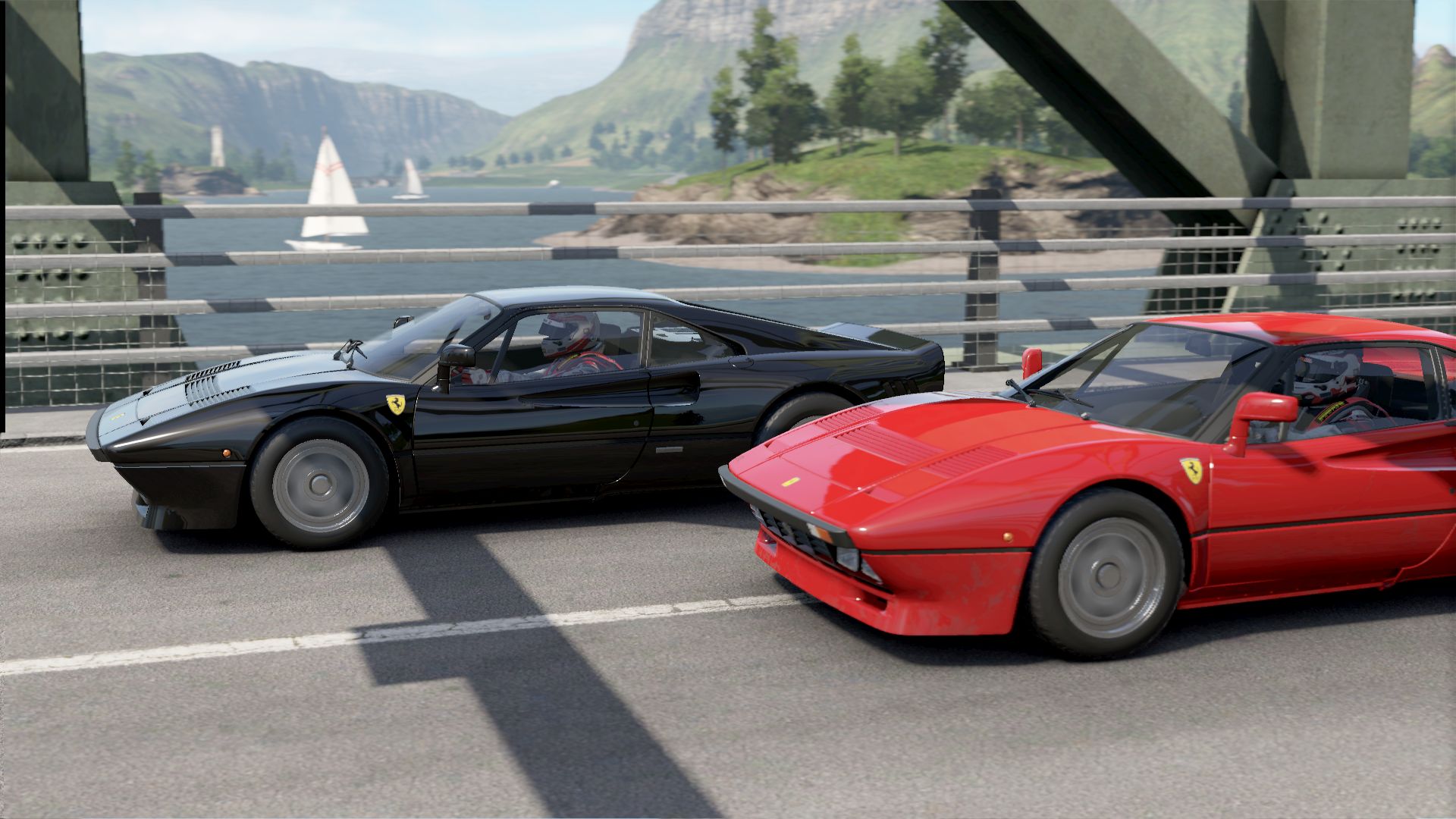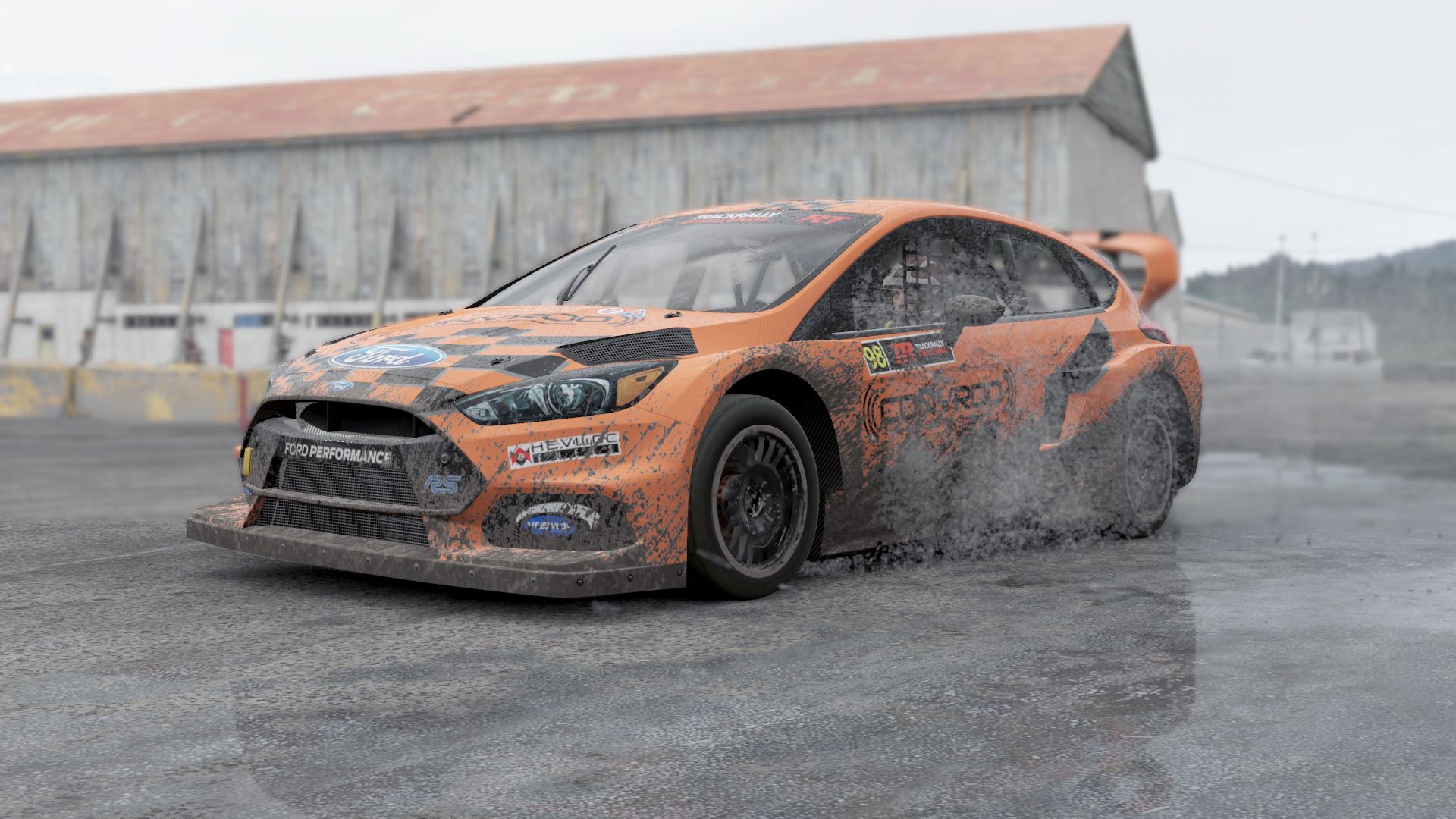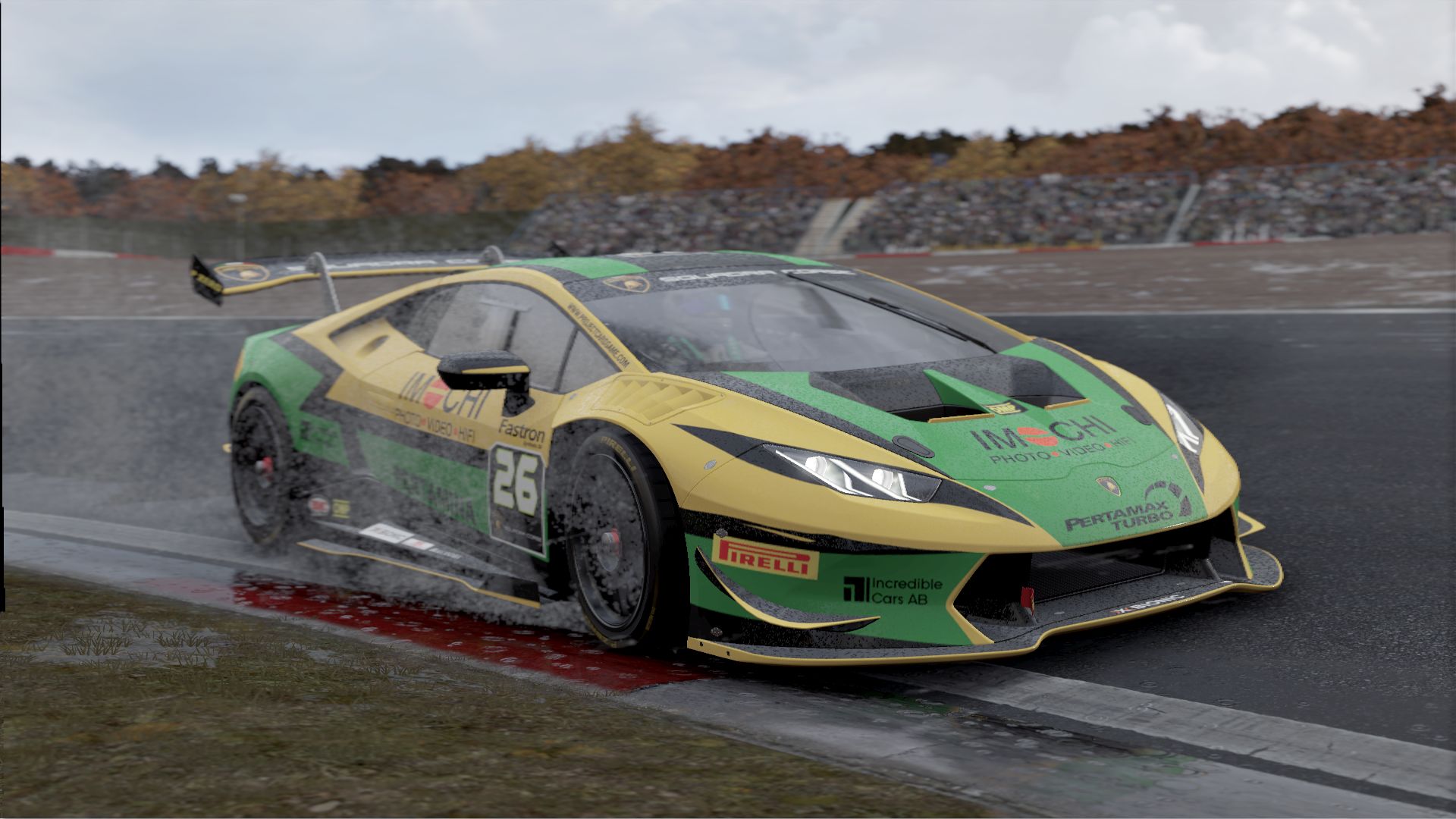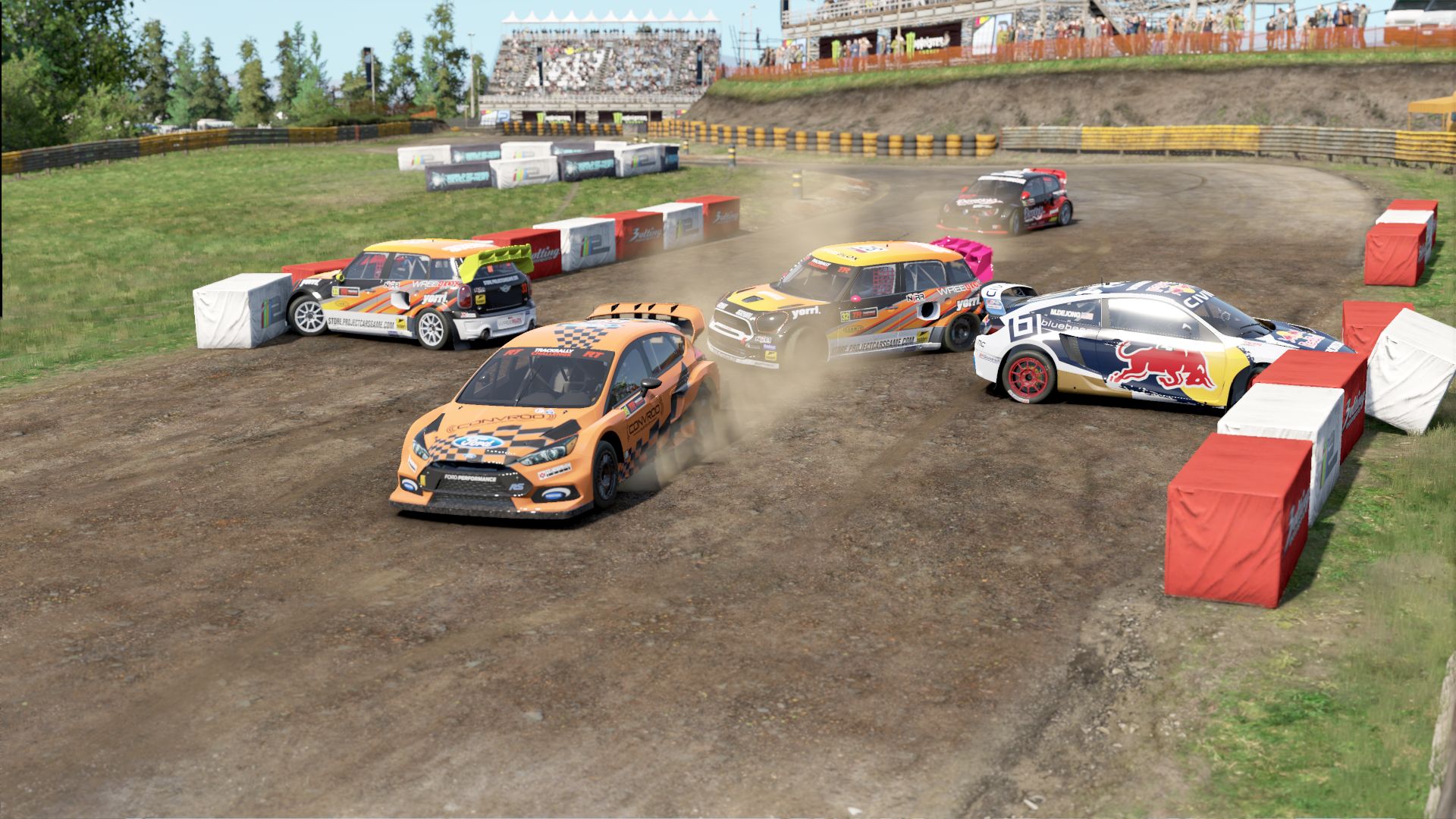Project Cars 2 Review
The original Project Cars worked out quite well for the developers at Slightly Mad Studios. They successfully crowd-funded a racing simulator, in under four years, that was able to compete with some bigger titles in the genre. The turnaround for the sequel was short, as it has taken just over two years to create, again with the aid of crowd funding. Project Cars 2 is a sensible follow-up when it comes to content; there are more cars, tracks, weather conditions, manufacturers, and motorsport disciplines on offer. Simulation purists will find great value from the highly customisable experience, as they can settle in for a long drive. More casual fans will find more hurdles to leap over, although should still appreciate the variety and depth. While Project Cars 2 is often a great racing experience, it is also not consistent in quality.

Project Cars 2 is designed to be a simulation and that means it’s inherently difficult. But it also is highly customisable in just about everything from AI difficulty, control sensitivity, race structure, vehicle type, and more. So it can be altered in such a way that even less experienced players can find enjoyment, albeit under limited conditions. When it comes to single player, drivers will be able to compete in either custom events or the loosely structured career mode. Both provide access to an extensive list of vehicles and tracks, some of which you will come to know well.
Although Project Cars 2 can’t compete with the likes of Forza or older Gran Turismo’s when it comes to the car roster, its offering is extensive and varied. It has nearly 200 vehicles and they are spread across a variety of disciplines and manufacturers. Traditional production supercars are represented well enough, with the likes of McLaren, Porsche, and Ferrari having models from different classes and generations. There are also Karts, IndyCars, touring cars, and Rallycross vehicles. Vehicle detail is usually high, both inside and out, although the damage modelling was poor for some. Collisions in Rallycross merely resulted in a fender dropping off, for example. At least, with damage enabled, hitting barriers or other vehicles affected steering and/or straight line speed. On top of that, vehicles handle extremely differently. Some have impressive aerodynamics to keep them on the track while others require a feather touch of the accelerator. The car roster is solid and covers almost every type of race vehicle that isn’t exclusively licensed to other games.
Vehicles can be driven across some of the most iconic race circuits in the world. Famous tracks, including Nürburgring, Spa-Francorchamps, and Indianapolis speedway, are awesome to experience firsthand. While most of the tracks are racing circuits, there are a handful of street courses and some custom off-road events. The official Rallycross tracks (new to the sequel) are very similar to their counterparts in this year’s DiRT 4. It even has that same industrial real-world location (DirtFish), although its ad-hoc courses are thankfully quite different and fun. Both Rallycross and IndyCar track offerings are substantial. The real strength with the tracks is that they can also vary considerably by changing options like time of day, season, weather, race length, time progression, and more.

The Rallycross offering is surprisingly robust
One cool feature in Project Cars 2 is the time progression and changing weather patterns. For long races, shadows move so they become unreliable breaking points at corners. Time can be sped up, and this gives even short races a full day/night cycle. It can mean you might need to endure sunlight in your eyes around some turns, but it does minimize visual repetition. At night, the lighting is quite different and it’s easy to overshoot corners. While the time progression was generally smooth, the changing weather was both dramatic and subtle. Overcast conditions turned into drizzle and then back to a dry track with believable realism. But short races had some abrupt weather changes, as there was often a distinctive transition between a mostly dry surface and one covered with puddles. The weather and time system is definitely good and it does bring something quite interesting to the various events.
Maybe you’ll take the Jaguar XJ220 around Silverstone in the rain and watch it slip and slide as though its wheels are covered in grease. Compare that to a Lamborghini Huracan GT3 that is nearly glued to the sunbaked road on the glorious Long Beach street circuit. Hop into a Rallycross car and slice through the gravel as you use the car’s shifting weight to avoid barriers while the sun sets. Or just take an IndyCar around the oval track at Daytona and find out how hard it is to avoid traffic and debris at 230mph. The handling variety is impressive and many combinations are enjoyable to firstly learn and then exploit. You can also tweak most vehicles extensively, by changing fuel reserves, tire pressure, down forces, or suspension—a simple Q&A with the race engineer is a great starting point.
Water on the tracks was regularly the toughest race obstacle for vehicles, requiring serious care when accelerating or steering. Puddles behaved liked death traps, causing many vehicles to lose any semblance of traction or harshly veer to one side. Other vehicles just needed earlier breaking due to the reduced friction. Some of these traction differences felt exaggerated to make for a harder driving experience, but that’s for professional drivers to ascertain. Both cars and tracks need to be respected if you want to succeed, but certain combinations are far harder to master than others.

Puddles found around corners can disrupt traction
One good way to experience a bit of everything, without thinking too much, is to complete the career mode. The career is tier based, with 6 tiers that each have several different motorsport competitions, like Formula X or GT3. The idea is to pick one discipline, complete it, and then move to the next tier. In this way you are practically guaranteed to get a broad experience but are given enough time to learn one particular subset of motorsport. Short races are possible but the game is sometimes biased toward gruelling sessions. At set points in the career you’ll be invited to mini events that feature specific cars, and although they provide variety, completing them actually disrupts the flow because you may have to learn another vehicle and another track. Once you ascend to the next tier, events in previous tiers are locked. After completing the final tier, earlier disciplines can be attempted.
While the career is structured better compared to the first game, it still lacks a bit in regards to progression. There are shiny trophies and accolades, but no funds to earn or vehicles to acquire. The career does have some broad goals to complete—win a certain number of events, earn affinity with a manufacturer, or compete in different vehicle types—but it could have been more rewarding. The career setup is satisfactory for a game with such a broad set of cars and tracks, although it does feel a little directionless.
When you actually get into races, some issues begin to arise, particularly in regards to the AI drivers. Depending on your driving skill, and perhaps the control method used, the AI opponents are tough but not always a nice challenge. You can set both their ability and aggressiveness, but even at maximum aggression they parted too easily when coming up from behind. On low aggression, much slower computer drivers sometimes dodged sideways towards me when passing them on a straight. Their skill in the career was erratic and not in a good way, forcing me to change difficulty options on a per race basis. In IndyCar, the back markers were actually faster on low skill than the default. At certain points it didn’t appear like the AI settings were doing anything or they affected proceedings in the opposite direction.

Clowns to the left of me, jokers to the right
The AI seems to follow rigid internal rules and this meant it occasionally broke in relation to the player. In the semi-final of the WRX championships, two drivers smashed into barriers opposite each other and stayed that way for the remainder of the race, unable to figure out how to shift into reverse. Simulated drivers navigated slippery surfaces at high speeds, yet on an ice track, the entire field travelled as though they were in a school zone. Computer drivers rarely crashed but there were nonsense chaos zones and one driver managed to get stranded during a formation lap. Having a challenging and fair race with the AI was just as much about luck as it was tweaking difficulty settings.
While the AI is problematic and inconsistent, there were many weird technical issues that hurt nearly as bad. After qualifying in 2nd place, the game put me 11th on the grid—this happened several times across the career and was never consistent. Restarting usually fixed the problem. Skipping to the end of a qualifying session was occasionally flawed because some or all drivers beat their current 2 minute lap times by 10-30 seconds. Even timings in races went bonkers, as the game occasionally failed to record lap completions for either myself or AI drivers—one poor chap finished a 2hr LeMans race some 80 minutes off the pace. These simple issues are a big problem for players who are looking for short, but authentic, races as they mean restarts are necessary.
Other bizarre issues occurred with impunity. During a computer-controlled rolling start, my self-driving car actually slammed into the vehicle in front. You can choose to manually control starts for a smoother transition, but nearby AI drivers seemed offended and randomly crashed into me or others. During one snow event, my Ford Escort couldn’t even make it to the first corner because it behaved like it was stuck. And in a long endurance race, my engineer told me to pit and repair some nasty damage, but my pit crew were a no show; after limping through the next lap, I requested a pit stop, but the crew must have been on their lunch break because the pit lane was empty. There were also a few relatively harmless visual bugs, like a driver model hovering above the starting line or invisible cars during a replay. After restarting an historic Lotus GP event, it was surprising to observe several vehicles cruise along with less than four wheels—they had lost them in the abandoned race. All these bugs may be fixed in time but they are just a sample of what is on offer in the career mode.

Flying cars are the future
Online racing is going to be less predictable because of the human element, but there were a few more tech issues to add to the pile. Joining games and merging hosts usually worked fine, although there were long delays or connection failures when switching between qualifying and race. Collisions and car movements functioned well enough, but some cars slid around the track without the corresponding tire squeals. You will need more patience when playing online because of the extra time added before and after sessions. If you join a game at the end of qualifying, all you can do it watch a screen with the leaderboard for a few minutes. There is also no way to filter out races currently in progress, and the server browser can take a while to show a modest list of online events. A good portion of the online lobbies seem to favour longish sessions and/or tweaked with the settings (manual gears, locked camera views etc.) so finding a game that suits might take a while. There is potential for some good online battles, but nagging issues cropped up a bit too often.
Aside from the aforementioned technical bugs, the game is still a fairly good experience in terms of visual and audio presentation. In over 35hrs of racing, the game never crashed. It also looks great. Tracks have detailed road surfaces across various weather conditions. Seeing cloud shadows drift across rain puddles is pretty neat. Vehicle sounds are diverse and quite intricate, although tires are far too loud on default. With the included photo mode, the game has the potential to be near photorealistic. Performance on the test PC was good enough. Framerate dropped a bit at night, with all those extra dynamic lights, but they sure look nice. Online races had some infrequent stuttering and a few disconnects. All racing was performed with an Xbox 360 controller and it functioned decently after a few tweaks to the deadzone and sensitivity.

When it works, it’s a smashing good time
If you are a fan of Project Cars then you probably already know what you are getting with the sequel. More tracks, more cars and the latest in global warming weather phenomenon all at the tip of your fingers in a highly customisable racing sim. Traditional simulator gamers, with a racing wheel and many hours to spare, will no doubt get immense enjoyment out of patiently learning each vehicle and every track. The car roster is solid and varied; the tracks are detailed and iconic. Those that prefer to merely dabble in a range of motorsports might struggle to overcome some obstacles. There are consistency issues with AI drivers and vehicle handling, and it has a truly bizarre collection of technical problems. If Slightly Mad Studios can fix these quirks, then Project Cars 2 will be a tremendous racing simulator, but until then its various misfires are too ubiquitous to wilfully ignore.
